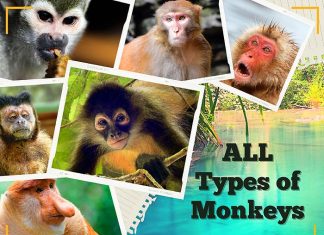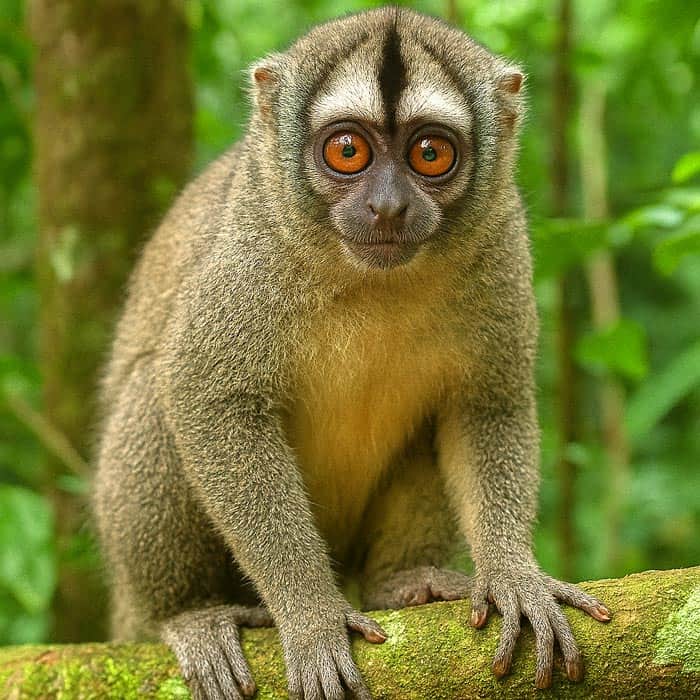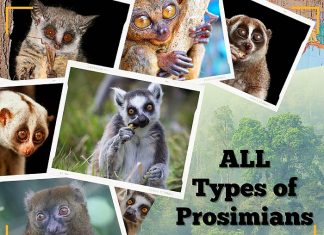
Types of Mammals: According to biological studies, mammals started to appear during the dinosaur era (200+ million years ago). Initially, mammals were small in size, and after the extinction of dinosaurs (end of the Mesozoic era – 66 million years ago), their sizes had started to evolve into more prominent forms.
By nature, mammals are warm-blooded animals covered with furry hairs which make them live anywhere in the world from icy polar regions to tropical forests.
There are many biological classifications and debates on types of mammals amongst the biologists themselves. The mammals are classified under kingdom – Animalia, phylum – Chordata, and class – Mammalia.
However, the commonly accepted types of mammals are grouped into three major categories based on how mammals reproduce their babies:
Table of Contents
Types of Mammals
1. Monotremes Mammals

This type of mammals lay eggs, and the offsprings come out from the hatched eggs. These are the ancient form of mammals, and even today, these mammals do exist. The babies feed on their mother’s milk, similar to other mammals. Monotremes mammals belong to the Sub-class Prototheria.
(Example: Platypus from Australia). Check out a post on Platypus featuring on animals with best sensors.
![]()
2. Marsupial Mammals

This type of mammal gives birth to the barely formed offspring, and the baby grows on a pouch on the mother’s belly. From there, babies drink their mother’s milk to get all nutrients and become fully evolved babies. Marsupial mammals belong to the Sub-class Metatheria.
(Example: Kangaroo from Australia).
![]()
3. Placental Mammals

This type of mammal constitutes a more significant chunk of mammals in the animal kingdom. The offsprings grow into a well-formed structure inside the mother’s belly for a long time (time differs between the size and shape of mammals) before the mother gives birth to them when ready. The baby in the womb gets nourishment from the mother’s diet via the umbilical cord (attached to the mother) inside the placenta (an organ where the baby grows). The placental mammals belong to the sub-class Eutheria.
![]()
Suggested Reading:
What Do Mammals Eat?
Characteristics of Mammals
Although the mammals can be monotremes, marsupials, or placentals, they all share a list of key features:

1. Warm-blooded
Mammals maintain a constant body temperature (via homeostasis) which are slightly higher than the environment temperature where they live in. They are usually known as homeothermic species (note: birds are also homeothermic).

2. Vertebrates
All mammals have a spinal cord (hollow tube) which is connected via vertebrae. All mammals are built along the same chordate body plan. However, it extends to the length of the animal as designed. All mammals have three middle ear bones, which are unique features.

3. Nourish Young on Milk
The mother in mammals produce milk via mammary glands (i.e., exocrine glands) to nourish the offsprings with nutrients until their digestive system improves to take solid food (plant material in case of herbivores or meat in case of carnivores).

4. Body covered with hair
Most mammals get their body heat from the food they eat. Body heat allows mammals to live in any climatic conditions. The hair/fur (composed of Keratin) on mammals provide excellent insulation to keep heat inside the body and saves energy for them. They are various kinds of animal coats, namely:
- Blubber: A think layer which insulates the fat. This type of skin is shared among marine mammals. (Example: Dolphins)
- Fur: Certain animals have two layers of fur, namely outer guard hair (coat/fur) and the inner woolly underfur. The outer fur sheds the water and keeps the underfur dry. (Example: Tiger)
- Spines: The outer hair of some animals are made into stiffer, sharper, and thicker spines that protect from predators. (Example: Porcupine)
- Scales: The skin for certain mammals is formed by fusing overlapping scales of modified hairs. Thus, the skin resembles a thick outer shell which provides excellent protection from predators. (Example: Pangolin)

5. Give Birth From Womb
Except for monotremes, all mammals give birth to offspring. The young ones grow in the female’s womb until it is fully developed and delivered.
![]()
Within the Mammalia class, there are about 5500+ known species of mammals identified and classified under 30 different biological orders. Still, new mammal species are being discovered annually and added to this list.
Monotremes Mammal Orders
- Order Monotremata (Monotremes)
![]()
Marsupial Mammal Orders
- Order Dasyuromorphia (Marsupials)
- Order Didelphimorphia (Marsupials)
- Order Diprotodontia (Marsupials)
- Order Microbiotheria (Marsupials)
- Order Notoryctemorphia (Marsupials)
- Order Paucituberculata (Marsupials)
- Order Peramelemorphia (Marsupials)
![]()
Placental Mammal Orders
- Order Afrosoricida (Placental)
- Order Artiodactyla (Placental)
- Order Carnivora (Placental)
- Order Cetacea (Placental)
- Order Chiroptera (Placental)
- Order Cingulata (Placental)
- Order Dermoptera (Placental)
- Order Erinaceomorpha (Placental)
- Order Hyracoidea (Placental)
- Order Lagomorpha (Placental)
- Order Macroscelidea (Placental)
- Order Perissodactyla (Placental)
- Order Pholidota (Placental)
- Order Pilosa (Placental)
- Order Primates (Placental)
- Order Proboscidea (Placental)
- Order Rodentia (Placental)
- Order Scandentia (Placental)
- Order Sirenia (Placental)
- Order Soricomorpha (Placental)
- Order Tubulidentata (Placental)
- Order Condylarthra – extinct (Placental)
- Order Creodonta – extinct (Placental)
- Order Desmostylia – extinct (Placental)
- Order Embrithopoda – extinct (Placental)



























[…] dodos. Pigeons are known for feeding their young “bird milk” very similar to the milk of mammals. The species of this order can be found almost […]